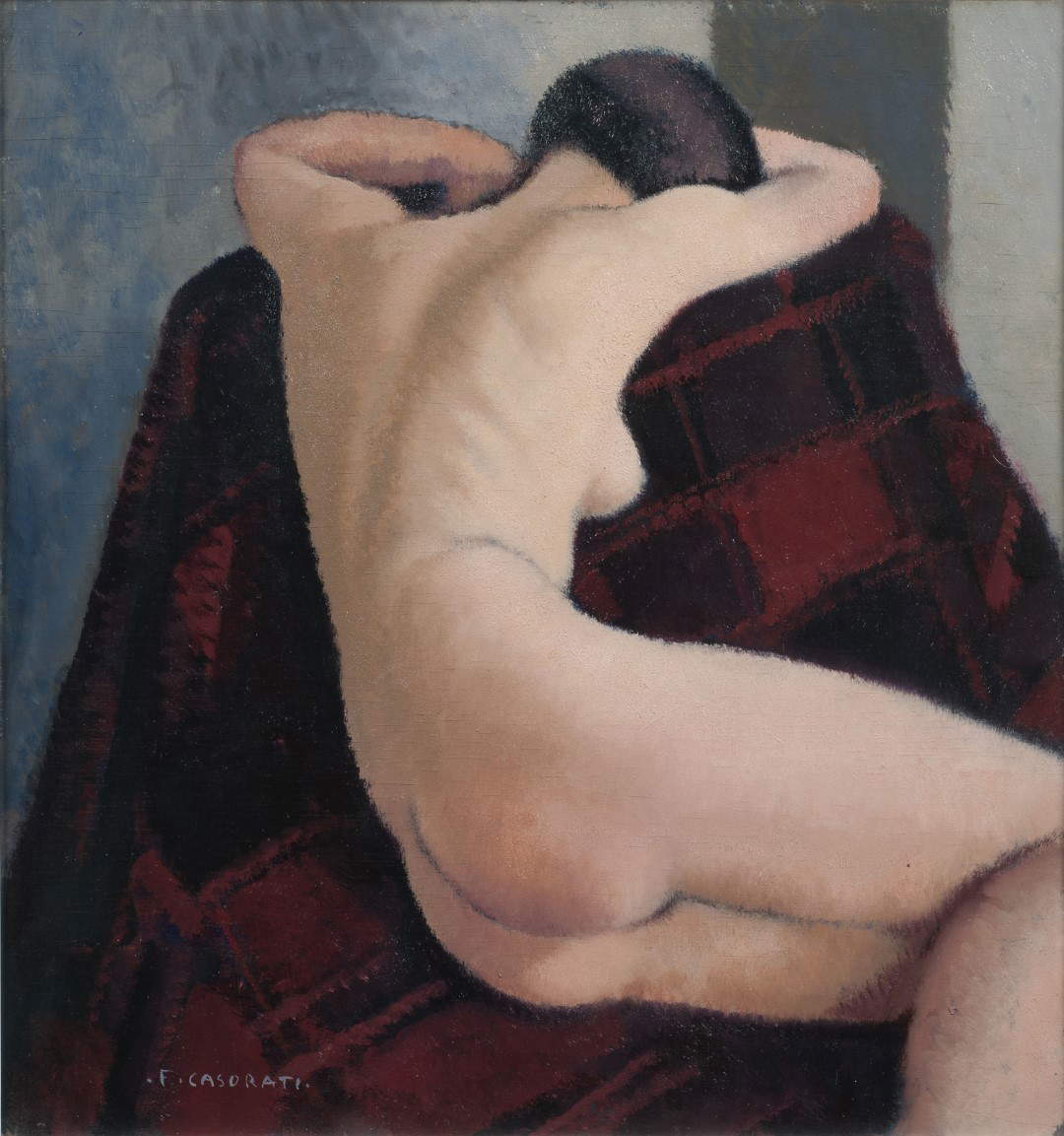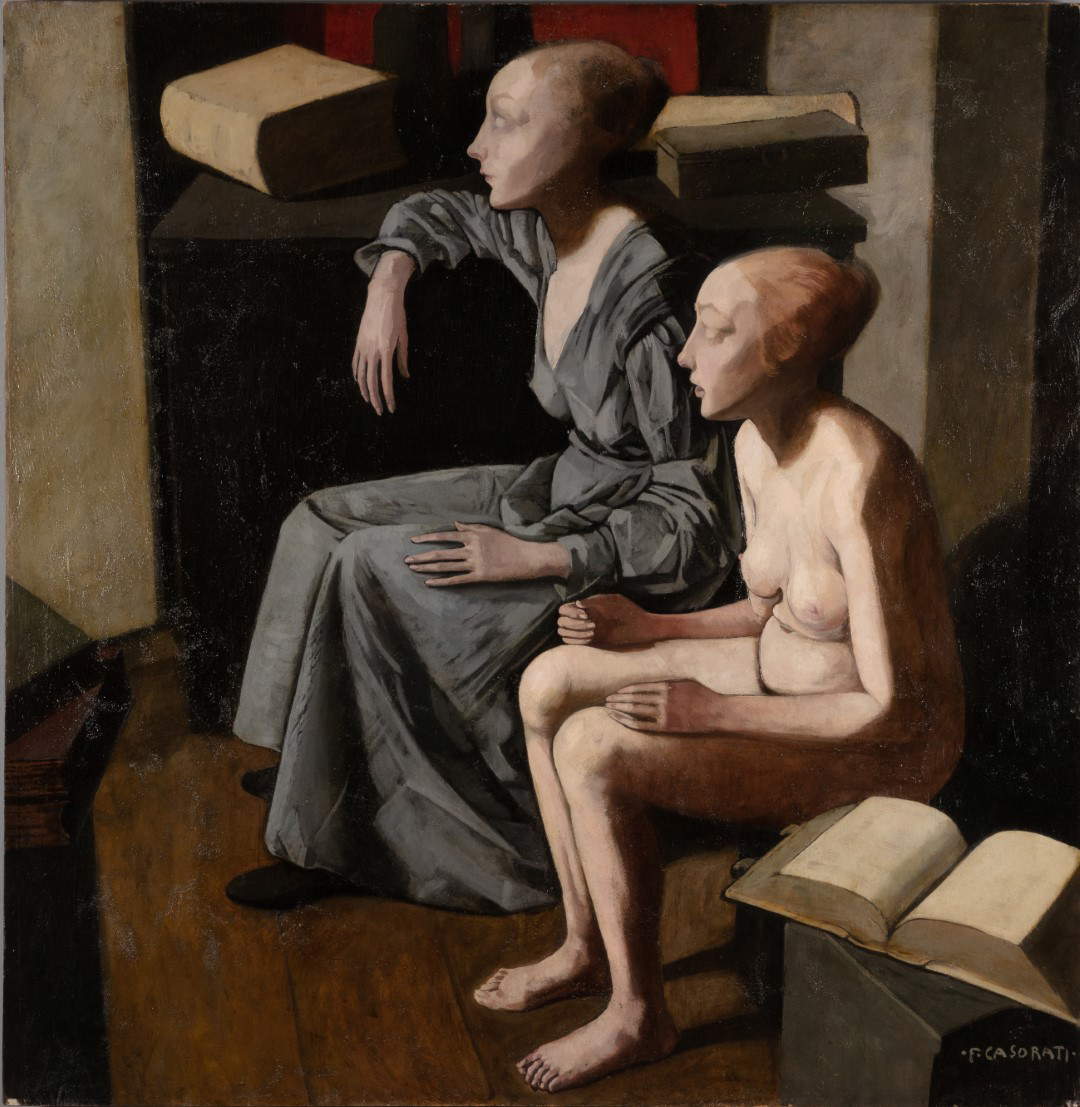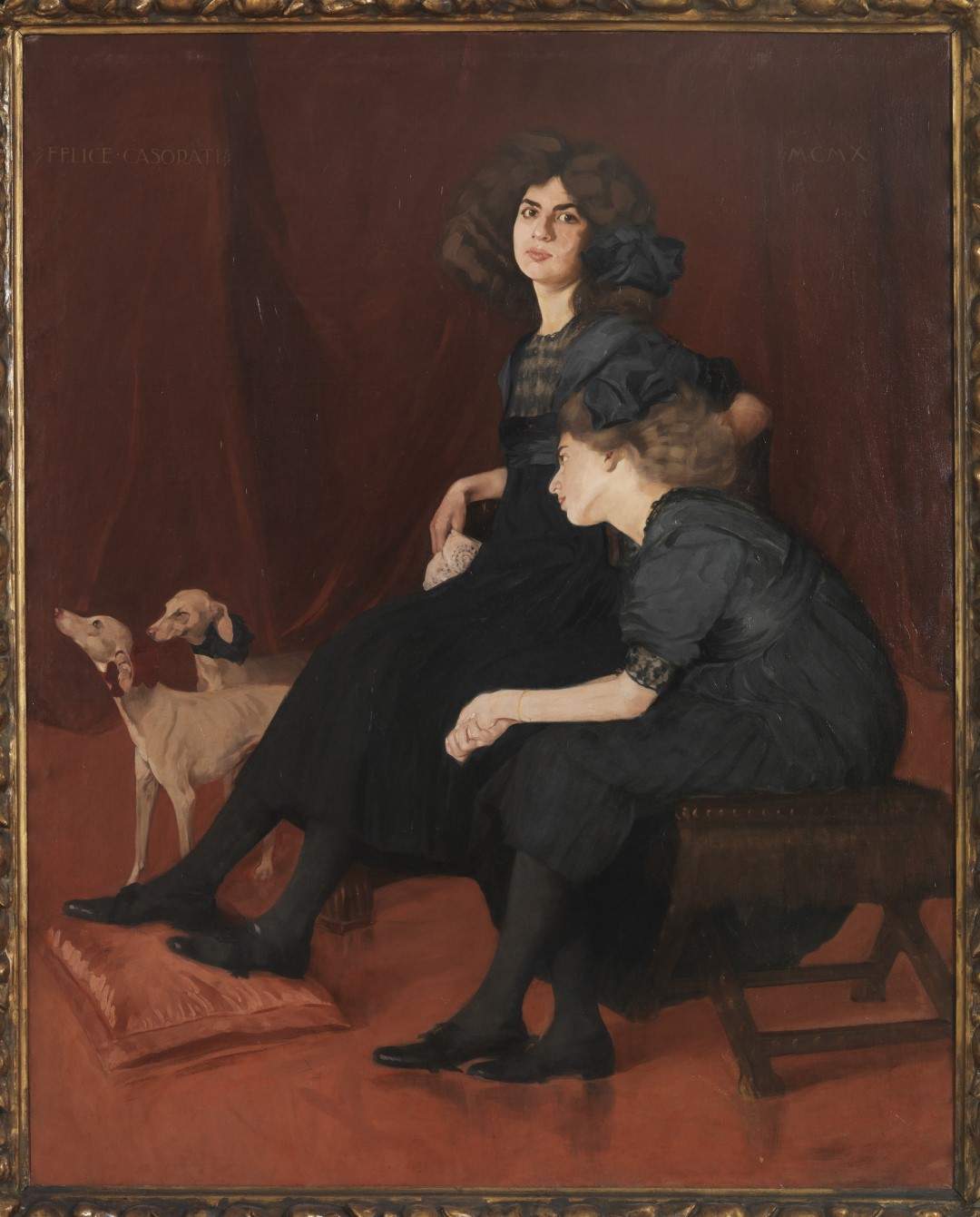From Dec. 1 to April 7, 2024, the Regional Archaeological Museum of Aosta is dedicating an exhibition to Felice Casorati (Novara, 1883 - Turin, 1963), entitled Pittura che nasce dall’interno, an extensive retrospective not without unpublished discoveries and research. The exhibition, organized by the Assessorato Beni e Attività Culturali, Sistema Educativo e Politiche per le relazioni intergenerazionali, and curated by Alberto Fiz, offers more than one hundred works including paintings, sculptures, drawings and theatrical sketches from 1904 to 1960 that allow us to reread the creative path of one of the greatest artists of the twentieth century by addressing, through seven sections, the fundamental aspects of his research with specific attention not only to painting, but also to a much less investigated field of research such as sculpture. Among the many masterpieces on offer are The Old Comrades of 1908, Persons of 1910, The Heiresses of 1910, Maria Anna De Lisi of 1918, Target Shooting of 1919, The Two Sisters of 1921, Women in a Boat of 1933, 1950. Then presented almost sixty years after his last public exhibition dating back to 1964 is the Nude with Braids or Back Girl of 1930, a particularly evocative painting.
Along with a group of partly unpublished drawings, Sleeping Girl, ink on canvas paper, an extraordinary testimony of 1921 that represents the preparatory study for the painting of the same name that was destroyed ten years later in the fire of the Glaspalast, the Crystal Palace in Munich, is also offered. Next appear two panels presumably dating from 1919 made by Casorati for his Turin home. They were concealed for decades by the artist himself and today, after careful study, are offered for the first time in a public exhibition. In the area of sculpture, a rare plaster bas-relief The Sleeper from 1924 identical to the one that was part of the private theater of the Turin patron and collector Riccardo Gualino is exhibited. There is also an in-depth look at Casorati’s private school, known as the School of Via Galliari, where his best-known pupils trained, including Silvio Avondo, Albino Galvano, Nella Marchesini, Paola Levi Montalcini, Marisa Mori,,, Lalla Romano and Daphne Maugham, who in 1931 would become his wife.
The title of the exhibition takes its cue from a text written by Casorati himself on the occasion of the I Quadriennale in Rome in 1931 that appears as a declaration of poetics: “In fact I have never understood the movement ’qui déplace les lignes’ and I adore static forms: and since my painting arises, as it were, from within and never finds its origin in the changing ’impression,’ it is quite natural that these static forms and not the moving images of passion, should be found in my figures... ”.
The works in the exhibition come from public and private institutions including the GAM-Galleria Civica d’Arte Moderna e Contemporanea and the Fondazione Guido ed Ettore De Fornaris of Turin, the Mart-Museum of Modern and Contemporary Art of Trento and Rovereto, the Archivio Storico Artistico - Bozzetti e Figurini del Teatro alla Scala in Milan and the Museo Teatrale alla Scala, the Musei Civici di Verona-Galleria d’Arte Moderna Achille Forti, the Galleria d’Arte Moderna Ricci Oddi in Piacenza, the Collezioni dei Musei Civici Fiorentini - Collections of the Twentieth Century, the Paolo and Adele Giannoni Gallery of Modern Art, the Collections of Contemporary Art of the Autonomous Region of Valle d’Aosta, the Tim Group-Olivetti Collection of Turin, and RAI.
The exhibition is accompanied by an extensive catalog in Italian and French published by Gli Ori with critical essays by Alessandro Botta, Luigi Cavallo, Alberto Fiz, Daria Jorioz, Luca Motto, Patrizia Nuzzo, Francesco Poli, and Sergio Risaliti.



Felice Casorati was born in Novara in 1883. During his childhood and adolescence he moved frequently in the retinue of his father, a career officer until he arrived, in 1915, in Padua, where he attended the classical high school and where, in 1906, he graduated in Law. In this city he began his artistic apprenticeship. In 1907 he was present for the first time at the Venice Biennale with the Portrait of his sister Elvira. Between 1907 and 1911 he lived with his family in Naples, and from 1911 in Verona, where he frequented the more advanced artistic environment influenced by the Secessions of Munich and Vienna. He will be present at the Venice Biennials in the 1909, 1910, 1912 and 1914 editions, at the International Exhibition of Valle Giulia in Rome in 1911, and at the 1913 and 1915 editions of the Roman Secession. At the end of 1915 Casorati went under arms, to Trentino. In the fall of 1917, after the tragic death of his father, Casorati, with his mother and two sisters Elvira and Giuseppina, leaves Verona and moves to Turin to the house-studio on Via Mazzini, where he will live all his life. The war and his father’s suicide will leave a deep mark on the artist that will also be reflected in the atmosphere of the great tempera paintings of 1919-1920. In Turin he formed a deep friendship with the young Piero Gobetti, who edited and published in 1923 the first monograph dedicated to him under the title Felice Casorati pitttore. He collaborated in his publishing activities and, in April 1922, appeared among the signatories, in Rivoluzione Liberale, directed by Gobetti, of an appeal addressed to young intellectuals to bring about a new, spiritually renewed culture and society. In 1920, after renouncing participation in the Venice Biennale and being excluded from Ca’ Pesaro, he promoted a veritable secessionist exodus that materialized in the Ca’ Pesaro Exhibition of Dissident Artists at the Geri Boralevi Gallery in St. Mark’s Square.
He became a protagonist and promoter of Turin’s cultural and artistic life: his works exhibited in 1919 at the Promotrice, in 1921 at the Mole Antonelliana, and in 1923 at the Quadriennale at the Valentino, where, in Room IX for which he was responsible, he invited De Chirico, Carrà, Tosi, Conti, Viani and the young Turin painters Chessa, Menzio, Levi, Galante and Morando to exhibit. He met Riccardo Gualino, who commissioned him to paint his own portrait and that of family members and commissioned him to design the private theater in his home. The little theater, designed and built in collaboration with architect Alberto Sartoris, would be inaugurated in 1925. Felice Casorati’s Free School of Painting opens at 33 Via Galliari, which becomes not only a place of artistic training for the students who attend it, but also a meeting place for painters and intellectuals. In 1926 one of his pupils was painter Daphne Maugham, whom he married in 1931, the year he bought the house in Pavarolo, on the Turin hillside. In 1934 his son Francesco was born.
In 1924 he was invited with a solo room to the Venice Biennale, presented by Lionello Venturi (he would later be present at numerous editions of the Venetian exhibition, with a solo show in ’38, ’42, ’52, ’64). From 1924 he exhibited at the Canegie Institute in Pittsburgh, where he would be present continuously until 1938 and again in 1950. Beginning in 1926, although in an independent position, he was present at the Novecento Italiano exhibitions organized in Italy and abroad by Margherita Sarfatti and from 1931 at the Quadriennali in Rome. In those years he exhibited in numerous international reviews. In 1933 he was called by Guido Maria Gatti and Vittorio Gui to collaborate as set designer at the I Maggio Musicale Fiorentino and designed sets and costumes for Gaspare Spontini’s La Vestale. For Casorati it is the beginning of his activity as a set designer, which lasts for twenty years, working, in particular with musicians Casella, Malipiero, Petrassi, Ghedini, Dallapiccola. He collaborated in the selection of works for the Novecento section of the great exhibition of Italian art of the 19th and 20th centuries in Paris, at the Jeu de Paume, curated by Antonio Maraini, in which he participated with five of his works. He is present, in 1937, in Paris, in the Italian pavilion, of the International Exhibition and in Berlin, at the Preussische Akademie der Künste for Italian Art from 1800 to the Contemporaries; in 1939 in San Francisco, for Golden Gate International and in London, in Contemporary Painting in Europe. In 1941 he was appointed professor of painting at the Albertina Academy of Fine Arts in Turin, of which he became director in 1952 and president in 1954. In 1955 he participated in the first edition of Documenta in Kassel. In 1960 he received the Gold Medal for Professional Merit on Capitol Hill; in September his sister Elvira, the subject of some of Casorati’s most important paintings, died. In 1961, already suffering from circulatory dysfunction, he underwent amputation of his left leg. After the operation he resumed his activity, devoting himself mainly to drawing and engraving. He died at his home in Via Mazzini on March 1, 1963.
 |
| Aosta, an exhibition on Felice Casorati with unpublished works and new research |
Warning: the translation into English of the original Italian article was created using automatic tools. We undertake to review all articles, but we do not guarantee the total absence of inaccuracies in the translation due to the program. You can find the original by clicking on the ITA button. If you find any mistake,please contact us.